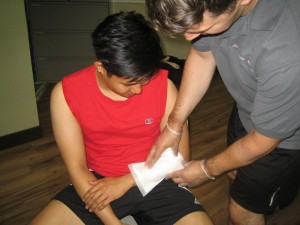Eczema is considered as a prevalent skin condition. There are 2 groups of eczema that you should be familiar with – atopic and non-atopic. Even though there are some subtle differences between their appearances, they often appear the same depending on how long the rash has been present. Remember that both rashes undergo through various stages the longer they persist.
The difference in stages is vital since certain treatments work better on various stages of the rash. All the 3 phases respond to antihistamines and topical steroids. As for oral antibiotics, they are useful in all stages in cases where bacteria break in the skin.
Acute stage
The acute stage is the time when the rash just started. Some of the distinctive characteristics of acute eczema include the following:
- Itchiness
- Blisters and reddened skin
- Aside from the commonly used treatment options, the application of cold wet compresses can provide relief.
Sub-acute stage
The sub-acute stage is basically the transition between the acute and chronic stages. The eczema evolves and takes on new characteristics such as the following:

- Presence of cracks in the skin
- Flaky skin that is no longer reddish as in the acute stage
- The itchiness is lessened to a certain degree but the skin can sting and burn
- The application of moisturizers and coal tar can be used as treatment.
Chronic stage
The chronic stage occurs after the rash has been present for an extended period of time. Take note that there is no specific time when eczema turns from sub-acute to chronic. There are differences with chronic eczema than the other previous stages such as the following:
- Cracks on the skin
- Thickened skin or lichenification with highlighted skin lines
- Severe itchiness persists
- Moisturizers are still beneficial at this stage while topical steroids are effective if they are wrapped with a barrier such as a plastic wrap.
Wet dressings for eczema
Even though wet dressings are utilized for other types of rashes, they can also be used to control eczema flare-ups. Aside from cooling the skin, it also reduces the itchiness and burning sensation and highly beneficial if the skin became moist or oozing.
When preparing a moist dressing, simply place a clean cloth in a solution such as cool tap water, Burrow’s solution or acetic acid.
Wring out some of the solution so that it is not dripping wet. Cover the affected skin with a moisturizer and place the wet dressing. Make sure that the moisturizer used under the dressing is a specific one for eczema.
Allow the dressing to stay in place for 30-60 minutes and can be reapplied 2-3 times throughout the day. Remember that it should not be done more than this since it can dry out the skin. It is recommended to use the dressings for 3-4 days until the worst flare-up of eczema is under control.
